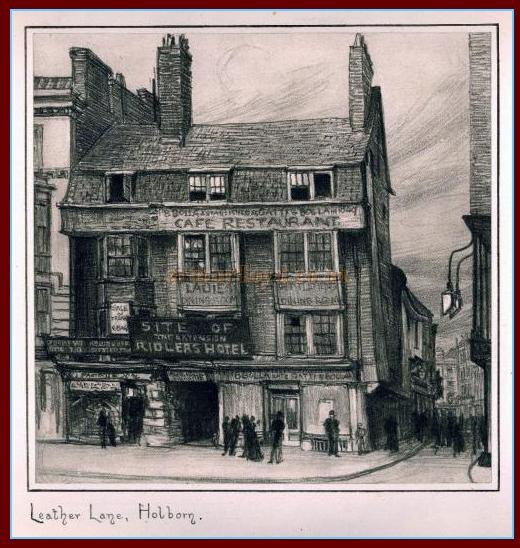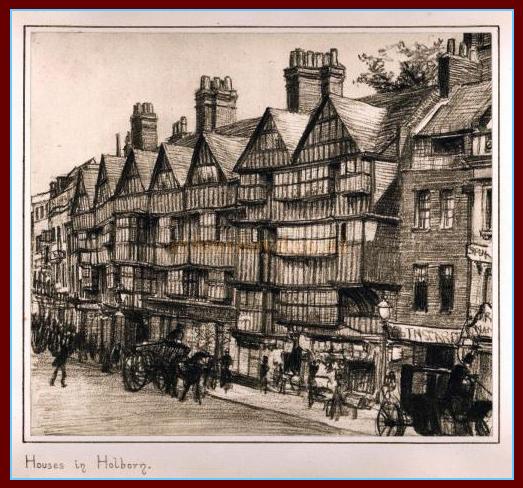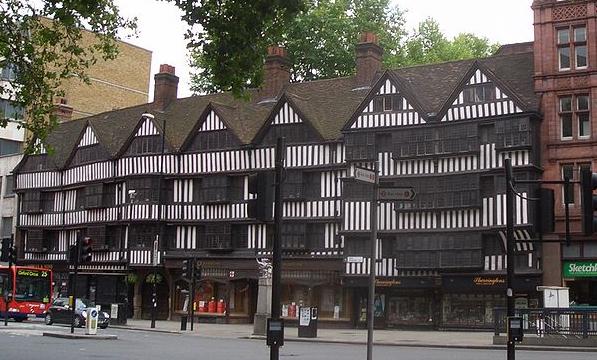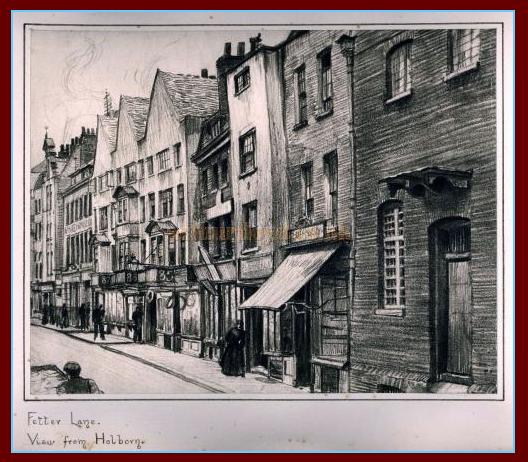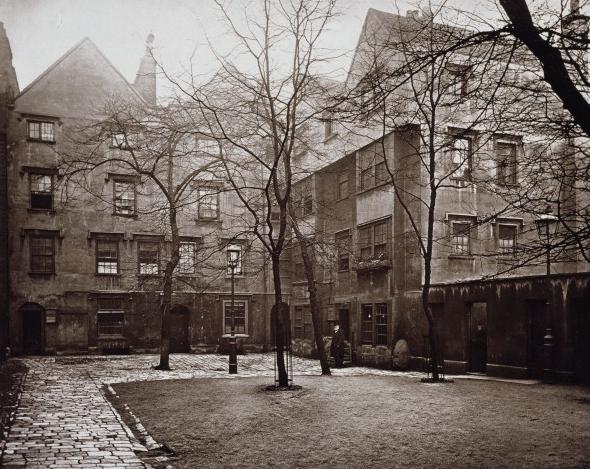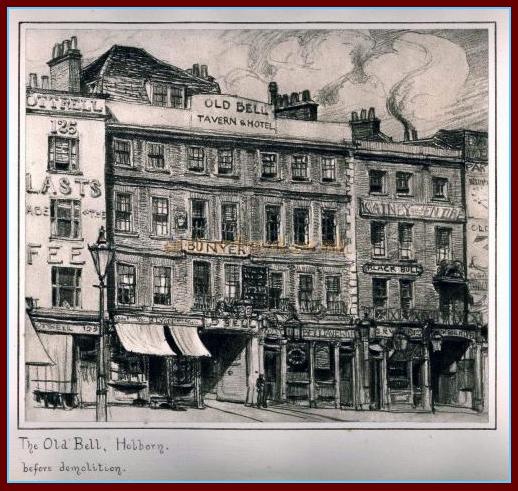Below are more goodies about barometer makers, modern London and old London...

Candida Martinelli's Italophile Site

Main
Page This family-friendly site celebrates Italian culture for the enjoyment of children and
adults. Site-Overview
There were immigrants from Italy
from 1000 onward, and possibly earlier: artists, artisans and
musicians from Italy traveled around Europe and further, offering
their services to the wealthy, or performing for the public,
including in London. In the 1200s and
1300s, bankers, traders, and merchants of all kinds, mainly from the
Genoa, Veneto and Lombardy regions, rich trading regions, set up
offices in major trading cities and along trade routes, including in
London. In the late 1500s, the Venetian Giacomo Verelini was making glass in
London. After his death, British businessmen monopolized
glass-making in Britain, but imported Venetian glass makers to run the
show. This is a
link to an article on the Vauxhall Society site about this. In the 1700s and 1800s, Italian artisans/craftsmen emigrated with
their skills, to find a more secure life, to the capital cities of
Europe, and to the emerging industrial cities of Britain, including
London, a growing megalopolis that grew in population from 1
million in 1800, to 6,7 million in 1900. Here is some information on the Italians living in London from the 1700s to 1911
as described in
an informative book, in Italian, on Google Books:
Arrivi by the Italia Comitato Nazionale Italia nel Mondo.
This is a summary of the
paragraph about the London Italians on page 210: The Italian community
in London was based in the area of the north of the city,
Clerkenwell, by the mid 1700s. In the beginning, they
were mainly artisans making mirrors, frames, mosaics, and
scientific instruments like barometers, thermometers,
microscopes, telescopes and surgical instruments.
Over time, rural
immigrants joined the group, although many of these were
seasonal immigrants. Other arrivals, later,
were republicans fleeing a monarchist Italy, and members of the
rare middle class from all over Italy. By the beginning of the
1800s, the Little Italy of Clerkenwell already had a Catholic
church, and was the most stable community of foreigners living
in London at that time. In the 1600s, Italian craftsmen were making mirrors
(a looking-glass, uno specchio) such as this.
On page 346, they talk
about Italians in London and Britain at a later period 1830s-early
1900s: In the years from 1841
to 1881 the residents of the London Italian quarter of Holborn
were mainly frame makers, statue makers, ice cream makers, and
organists. Only in the latter
period did builders arrive. (They explain a bit earlier that
most of the British needs for manual laborers was filled by Irish immigrants.) At the top of the
Italian labor pyramid were the artisans made up of makers of
optical instruments, silversmiths, makers of frames, bird-cages
and fine wood workers. From 1861 to 1911 in
Britain, the major part of Italians worked in food service jobs,
restaurants, as cooks and waiters. The numbers grew rapidly
from 1891 to 1911 going from less than 1000 to more than 4000
people. The second largest
group were the grocery shop workers, followed closely by
domestic workers (maids, grooms, etc.). Other categories were
street-vendors, ice cream sellers, roast meat sellers, and
organists. An Anglo-Italian ice-cream barrowman London was home to immigrants by the name of
Martinelli. They were not part of the huge wave of
immigrants that spread out from Italy during the late
1800s to early 1900s. They probably left Italy around
1800, from the Lake Como area. One of the earliest Martinelli immigrants to
London was part of the artisan/craftsmen
community (wood workers, metal workers, instrument makers, mirror
and frame makers) who found it easiest to emigrate from the Italian
peninsula to various European capitals. They took their
valuable skills and left for a more secure life abroad. Today
we would call it a 'brain-drain', or a 'skills-drain', I suppose. From the Arrivi book I learned
on page 338: From regions around
Lake Como, immigrants went to German cities, the Veneto, and to
Torino. These immigrants were
those who had the most common skills of immigrants at that
time: sellers of barometers and thermometers, metal workers and
many builders and craftsmen. An Italian frame from the 1800s, gilded wood
Louis (or Luigi) Martinelli, born probably circa 1766, in or
near Como, Italy,
was likely one of those Lake Como
barometer, thermometer, mirror and frame makers. He worked in London in the
first half of the
1800s and died in 1845, in London. He and his family carried on the
barometer
crafting trade for nearly 100 years in London, under various names,
and at various addresses.
Gondolier on Lake Como Barometers measure air-pressure, which can
then be used to predict the weather. They can also be used to
determine altitude: the height of the mercury in it's tube in
the barometer corresponds to a table showing the feet above sea
level. Barometer Face (Aneroid)
Barometers were the must-have, high-tech item
of their day, first in the homes of the wealthy, at at shipping and
fishing ports, and then in the
homes of the growing middle class. From the mid 1800s to 1900, mercury barometers
reigned, but then the aneroid barometer made it possible to produce
smaller barometers, more cheaply, eventually destroying the market
for expensive handcrafted mercury barometers. At it's height, the barometer was combined in a
beautifully tooled wooden case with various other instruments like a clock, a spirit level, a mirror, a
thermometer, and a hygrometer, which measures relative humidity.
The early instrument makers called themselves 'makers of philosophical
instruments'.
The Italian White Pages show that Martinellis still live in the Lake
Como area, but because of Italy's massive internal migration,
Martinellis live everywhere in Italy, from Lake Como to Sicily!
So it is not definite that all the Martinellis making barometers in
London were related. There are many Martinellis who made barometers in
London over the years. Some may have been itinerant, coming to
Britain, then returning to Italy for a while, before returning again to
London. This was a common pattern, it seems, for many immigrants. I am not going to trace
all of them, but I will use some of Lewis Martinelli's London family history,
all accessible from public records, to help illuminate the life of Anglo-Italians in London from
roughly 1800 to 1900. Lewis Martinelli was born in or
near Como, Lombardy, Italy, in 1766. Because he was a barometer
maker, some of his movements can be traced from the signatures on his
barometers.
For example, from a barometer signature database
compiled for scientific instrument collectors, we know that: Lewis
Martinelli made wheel barometers and thermometers, and was also a
carver, gilder and print seller at 82 Leather Lane, London from 1803 to
1811. Leather Lane was at the center of London's
Italian community since the 1700s, and would remain so until World War
I. Leather Lane links the main roads of High Holborn and Clerkenwell Road.
Clerkenwell is London's original
Little Italy, beginning around 1700, and later Holborn became known for the large number of
Italians and Anglo-Italians living there. Here is a view of old Leather
Lane looking toward High Holborn
Leather Lane, today, is known for the
Leather Lane outdoor market where the stalls line the street.
(There is a very short
promo for the
market on YouTube.)
The market has been a fixture of the area since as long as anyone can
remember, 300 years, say the London historians.
Leather Lane is a very old London street, mentioned in a 1538
survey of London. In the early 1700s, a large brewery covered
the end of Leather Lane. By the end of the 1700s and the early part
of the 1800s, there were several clockmakers on the street.
And there was a renowned coach maker, William Fenton, at 36 Leather
Lane during this same period. But there were also churches,
printers, inns, pubs... all sorts of businesses on the street over the
years. And there were other Anglo-Italian
barometer and instrument makers in Leather Lane,
including one half of the most famous instrument maker that still
exists today, Negretti & Zambra, which I mention,
again, below. Leather Lane ends at High Holborn, which was
another street known for its barometer makers, and the site of Negretti
& Zambra's most famous shop. Negretti & Zambra's Holborn
Shop
Today, at 82 Leather Lane, Lewis
Martinelli's old shop address, is The Clock House
Pub. It was probably constructed in 1869 by a Mr. Thomas Middlemore Marshall.
From the photo below, you can see that Lewis Martinelli had a wonderful
location, situated on a corner of
the busy street. Today, 82 Leather Lane
But the address of 82 Leather Lane is interesting because it was also
the
address of other Martinelli barometer makers. The one just before Lewis is M. Martinelli & Co., barometer makers at 82
Leather Lane, Holborn, London c. 1810. Here is one of M.
Martinelli's pieces
from that time, that contains a thermometer and a barometer. The
description is from an sales catalog. "A mahogany wheel barometer with broken arch pediment above a
barometer and thermometer, inscribed
'M. Martinelli & Co., 82 Leather Lane, Holborn, London', the case
decorated with inlaid shell and flowerhead motifs c.1810, 39in.
high. £180-250."
The "inlaid shell" and "flowerhead motif" were just coming into fashion
in 1810, and were often called "Sheraton Shell" decoration. Here's
a better look at it, and at the "stringing" wood design often
found around the
edge of the barometer case.
Beautiful, aren't they?
Before M. Martinelli & Co, there was Martinelli P. L. M. & Co.,
a group of Martinelli barometer makers working together in 1799 out of
82 Leather Lane, London.
The L. in the group might have been Lewis, as
Lewis was in London at the time. He married Abigail Marshall on August 8 in
1799, in London. And they had a son, Lewis (Louis), in 1799,
who became a very successful coachmaker. He was apprenticed at age
16 in 1815 to a coachmaker, and followed that profession - doing very
well, and leaving an estate of over £6,000 when he died in 1884 (worth
over £500,000 today). Another son, Alfred Peter Dominico
Martinelli (1806-1849) took up the family profession of barometer maker.
(My thanks to site visitor EH for this information!)
It was traditional in many Italian families,
at the time, to name
the first born son after the father, and the first born daughter after
the mother. Later children were often named after the
grand-parents.
The P. in the group could well be a P. Martinelli who is known to have
worked earlier in Edinburgh, Scotland, and with Ronchetti and Co. in
Coventry.
Italian instrument makers were known to
move around between towns like Aberdeen, Edinburgh, London, Coventry,
and on the continent in Amsterdam. Sometimes the spelling of their
name changed with each move!
Just a note on the Ronchetti family:
Ronchetti, sometimes Ronketti, was another important name among Italian barometer
makers, a bit bigger than the Martinelli name, a bit more famous, and
working a bit longer at it, into the 1800s. The Ronchetti Bros.
worked in London at 172 The Strand until 1880.
One Ronketti, John Ronketti, worked in New York around 1850, and
another, John George Ronketti, worked in New York around 1852-1853.
A major branch of Ronchettis worked out a Manchester, England and
developed special instruments for industry.
John Merry Ronchetti, sometimes written Ronketti, was the most
famous Ronketti barometer maker. He worked as a barometer maker in
Italy and then in England, making the earlier-style stick barometers and then,
later,
the wheel barometers.
This is one of John Merry Ronchetti's very beautiful, early English barometers, from around
1787, signed 180 Holborn, London, his place of work for many years.
He was from the very first generation of Italian barometer makers in
London, who started signing their work, made in Britain, around 1780.
Note that the decoration is not the later, standard, shell decor.
He also has a compass at the top, and a spirit level at
the bottom, with his signature and address engraved on it.
This beautiful flower motif is from another early Italian barometer,
made in 1795, by Charles Chivatti.
There is also a record of a
B. Martinelli making
barometers. He could have been part of the Company, too.
And D. Martinelli was a barometer maker working on Grays Inn
Road, London. c. 1802, a few streets over from Leather Lane. And
later
Martinelli & Ronchetti worked out of 34 Grays Inn Road from 1805 to
1825.
But there was a D. Martinelli who worked at 19 Leather Lane
from roughly 1810 to 1830. He could
also have been a part of the company, or just another relation, even a
distant relation, working further
up Leather Lane at the same time. (In 1840, Negretti, of the famous
Negretti and Zambra company, was working out of 19 Leather lane. See
the left
column for more on Negretti and Zambra.) D. Martinelli made this piece that houses a thermometer and a
barometer, c1810. The selling price is
£2200. The sales catalog description says: "Mahogany
cased 8" dial mercury wheel barometer and alcohol thermometer by D.
Martinelli, 19 Leather Lane, London. Case decorated with floral
and shell inlay. Triple strung boxwood and ebony edge lines.
Scale engraved with horizontal weather positions."
The "horizontal weather positions" refers to the text on the barometer
face, such as "Rain", "Stormy", "Fair", etc. Later, they were
engraved around the dial face, rather than horizontally. For
collectors, this sort of thing is a sign of when the barometer was made. I don't know how long Lewis remained at the 82
Leather Lane address, but some records of barometer signatures suggest he
left in 1811, and there is a barometer record that he lived and
worked in Brighton, England, at 102 London Road, possibly from 1830
to 1838. The address still exists. It is
102 on what is now called the Old London Road. A bypass road sits
to one side of it now, and is the new London Road.
102 Old London Road
The terrace house sits in the middle of a row, and they are not that far
from the coast, in a lovely area.
Here you can see the road, looking toward Brighton and the sea beyond, with the bubble over
the car in the middle, marking the location of the terrace house, on the
left side of the street. It is a lovely street with shops,
charming old houses, pretty gardens here and there, and an old post
office.
But there is also the record
(a census record) that
Lewis's son, William
Martinelli, was
born in Brighton in 1815, so Lewis could well have been living and
working there in 1815 when William was born.
But why would Lewis have left London? I don't know
his reason, but I can guess why immigrants would think twice about
remaining in London in the early 1800s. Living
conditions in London were famously horrible:
filth because there was no sewer system,
cholera because there were only water pumps
that became contaminated, or buckets lowered down into the filthy
Thames River for water (this was not resolved until the 1860s), overcrowding
from inadequate building, violence from rampant alcohol abuse, crime
fuelled by a sharp divide between rich and poor, and exacerbated by
there being no standing police force for the city (not until 1829).
And from 1800 to 1810, the number of Italians emigrating to the Leather Lane area
multiplied rapidly. But they were no longer just craftsmen.
The
Italian poor came in search of work, possessing few skills other
than agricultural skills. The character of the area
changed rapidly from an artisans' area, to a raucous Little Italy.
In 1841, the Italian patriot Mazzini complained that London's Italians
spoke a mash of Comasco (the Lake Como dialect) and English, but not
a proper
Italian. He set up a free school for them, to learn proper
Italian, and to encourage their patriotism for a united Italy. He
firmly believed that once Italy was united into one country, all of
Italy's diaspora would return to live in a prosperous Italy. And
Irish immigrants settled in the Clerkenwell area, too, aggravating the
already difficult living conditions. They settled there because it was
cheap, and because they preferred to live with fellow Catholics for
safety from anti-Catholic bigots. In the
early years of the 1800s, the only
Catholic religious services in London were conducted by Italian priests,
in English and Italian, on the embassy land of the Kingdom of Sardenia. In the early 1800s, 20%
of London's population was from Ireland.
Lewis Martinelli eventually moved back to London, perhaps when
improvements had been made to the city infrastructure and more city
services began to arrive. This was a time of great
growth in London, the population swelling, but as the 1800s
progressed, it also became a time of huge public works
projects:
sewers, fresh water supplies, mass public transport,
new neighborhood developments. In the 1800s, London grew to become
the capital of the western world.
Lewis Martinelli, in his 60s moved his family back to London and made thermometers
and
barometers, and was an optician and looking-glass maker, from 1834 to 1846
at 62 King Street, Borough, London.
The Borough is today
called Historic Southwark. It is the area of London near the south
end of the London Bridge. There is a famous Borough Market that
still exists today.
Over the years, there were records of a barometer maker, or makers,
working under the names:
Lewis
Martinelli, L. Martinelli, L. Martinelli & Co., L. Martinelli & Son, Lewis Martinelli & Son.
At that time, it was quiet usual that several generations of the same
family lived together. Social nets provided by the government
did not exist, so poverty among the elderly was a real problem,
unless they had children to take care of them.
The sometimes dire situations of Italians in London
prompted better-off Anglo-Italians to form social organizations
to provide assistance to the destitute and needy within the Italian
community. They even established a school and an Italian
hospital in London.
During this time,
1835-1845,
Lewis's son, William, made barometers under his own name. W. Martinelli
worked out of 2 King Street, down the street from his father.
Also working out of 2 King Street from 1835-1855 was N.
Martinelli. Another brother, perhaps, a relative?
The very beautiful barometer below is a
a banjo or wheel type barometer made by Lewis
Martinelli in 1835, and you can see how the art had developed since
1810. The case includes many more instruments: a hygrometer
(humidity), a thermometer, a clock, a barometer, and a spirit level. From a sales catalog: "A William IV rosewood wheel barometer with timepiece by Lewis
Martinelli, London. Circa 1835. 'The case with swan neck pediment
and banded with kingwood within ebony and boxwood stringing, with
hygrometer above bayonet-fixed mercury thermometer with bow-front
glass, with convex brass bezel and glass to 6 in. diameter silvered
Roman dial (the clock), with eight day single chain fusee movement with anchor
escapement, blued steel moon hands, convex brass bezel and glass to
12 in. diameter silvered dial engraved to the centre with a
terrestrial map, signed L. MARTINELLI & CO./62 King
Street/BOROUGH, with spirit level below. 50ľin. (127.5cm.)
high. Estimated value 4,000$."
On November 11, 1838, Lewis Martinelli's son, William, married in London. William would go on to have a large family, and
William's sons would follow him into the business, for a while.
After the barometer business declined, the sons found other professions.
There is more on William below. I want to mention here another Martinelli family who was
making barometers in London at this same time. I don't know if
they were relations of Lewis or not, but their story has a
unique element in it.
Alfred Martinelli worked at various addresses from
1839 to 1851:
36
Charlotte Street, Blackfriar's Road, London (1825-1835); Halesworth, 43 Union Street, Borough, London (1839);
96 Vauxhall Street, Lambeth, London
(1843-44); 18 Vauxhall Street, Lambeth, London (1845-51), and
with the
William Day & Co in 1850 at 70 Union Street, Borough, London.
When Alfred died in 1851, his wife Elizabeth took over the business
and made barometers, signed E. Martinelli,18 Vauxhall Street, Lambeth,
London, from 1851 to 1853. Their son, Alfred, later joined her in
the business, for a while. This barometer was made by an Alfred Martinelli.
The text is from a sales catalog. "A MERCURY WHEEL BAROMETER
in a mahogany case with satinwood edging. A swan neck
pediment with central brass finial. A silvered engraved
thermometer scale and main dial. Circa 1830. Signed on the
main dial "A Martinelli, Halesworth". Height 37 " / 94 cms.
£ 580 (US$ 939) (Euro 638)."
William Martinelli's Barometers Lewis Martinelli's son, William Martinelli,
began making his own barometers around 1835, usually labeled W.
Martinelli. His earliest addresses were: 2 King
Street (same address as N. Martinelli, and concurrent with William
signing barometers with other addresses, suggesting he worked on
various projects as needed) (1835-1845) 21 Wells Street, London (1840)
and
Oxford Street, London (1840).
From 1840 onward, William and his wife's family
grew. Census records record the growing family and their addresses, and
the professions that William and his family members listed on the census
forms. By 1841, William had moved his business to 5 Friars Street, Blackfriars
Road,
London (1841), not far from his previous address in the Southwark area
of London, south of the Thames River. William's designs mostly incorporated the 5
elements of his father's last designs: the hygrometer (humidity),
a thermometer,
a clock,
a barometer, and
a spirit level. Some,
however, only had 4 elements. The clock was left out. The
clocks were purchased from clock makers, generally, and inserted into
the designs, making it an expensive element. Perhaps William's
early designs were simpler and less pricy than the top of the line
barometers, to cater to an emerging market of lower income customers?
I can only guess... Here is a clock-less W. Martinelli design that
shows the simplicity of style that denotes a lower price:
In case you're wondering, the
maker's signature was usually placed on the spirit level at the bottom.
You can just make it out here: W. Martinelli 2 King Str, Bor.
If there was no spirit level, then the signature usually appeared on the
face of the barometer, like this:
In 1845, Lewis Martinelli
passed away, at the age of 79. He lived a long life, saw his grandchildren born, and perhaps even his
great-grandchildren. He saw London grow from chaos to the West's
major city. And during his lifetime, Lewis Martinelli created
works of art that would be prized possessions in countless families over
the years, and that still command hefty prices for anyone wanting to own
an L. Martinelli barometer.
It is also around this time that
William started to sign his work:
W. Martinelli & Son, 2 King Street, London.
Here is one of those barometers. You can see
that the woodworking is more sophisticated than the earlier model, but
he still has a mirror in place of the clock. The text is from a
sales catalog. "A 19th Century mercury wheel barometer and
thermometer with broken pediment, dry/damp indicator, thermometer,
mirror, silvered dial and spirit level by W Martinelli & Son, 2 King
Street £200-300"
Here is another W. Martinell & Son barometer that includes a
clock: "Mahogany five glass banjo clock barometer,
signed W. Martinelli & Son, 54, Snows Fields, Boro, the 10"
principal silvered dial within a satinwood banded shaped case
surmounted by a broken arch swan neck pediment. Estimate:
800-1200"
Soon after that, perhaps even as soon as 1851 when the census was
carried out, William signed his work:
W. Martinelli & Sons, 54 Snows Fields,
Borough, London, again in the Southwark area, and not far from the
previous addresses.
William and his family appeared in the census of 1851 and
were listed as living at 54 Snows
Fields, Bermondsey, London. Snows Fields (today Snowsfields), Bermondsey.
Here is a
photographic image from 1881 of houses in Bermondsey Street, just
off Snowsfield. These were some of the old houses
from Elizabeth I's era that were demolished in Bermondsey to build new,
better housing for London's growing population. This is 48 Snowsfields today, the first address on the
left. It is the sort of building William would have lived in,
above, and had a workshop, below. This stretch of William's era's
housing is the only stretch that still exists in this recently renovated
area. I don't think this part will last long.
Something the 1851
census shows clearly, is that large families were the norm at this time.
Reliable birth control did not exist, even if families wanted to use it.
And the toll on women of
near continual pregnancies was very high in terms of poor health and
early
death.
When retracting family trees through this period,
many find that quite a few men married more than once, upon the
death of their wife. Families were, contrary to popular opinion,
quite often composed of a father, step-mother, and the children from
more than one mother.
And the streets of London were teeming with children, just as
the streets of many developing countries today are teeming with
children, for similar reasons. But childhood deaths were common
too, during this time of smallpox, influenzas, measles, infections and
poor sanitary conditions.
The death of a child was a terrible curse on all families at this
time, rich and poor.
Here is another very beautiful
William Martinelli barometer. The text is from a sales
catalog. "Mid-19th Century, in a boxwood and ebony strung
mahogany case with flame veneer, and with five dials for the various
instruments and a spirit thermometer and butler's mirror. 38"
high, 10" wide, 2" deep." The estimated price is 1500.US$"
Later, William Martinelli signed his work: W. Martinelli, Snows Fields, Bermondsey,
or W. Martinelli, or 120 Snows Fields, Bermondsey, London.
This was likely because he moved, and was working alone again.
By the time the 1861 census came around, William was 45 and still
listed as a barometer maker and living with his wife and their children.
The children had found professions of their own, such as Tinman (a metalworker who made, sold and repaired tin pots and
pans), and a Laborer. London was booming by now.
Public works were everywhere to be seen. Making the city livable
for the millions already there, and for the projected millions due to
arrive in the coming decades, was a major priority of the borough and city
governments.
The public works created jobs, not just temporary jobs.
Young men could find work driving trains and trams, installing and
maintaining gas lighting, building and maintaining paved streets and
sidewalks, and policing the city. And then there were the jobs in
the service industries that helped provide food and for the other needs of
London's millions. Barometer making was no longer a viable profession.
So when the 1871 census came along, when William and his wife
were 55, William described himself as an optician (the census forms were
filled in by the head of the household).
William's
death was recorded in March of 1891, aged 75.
William lived and worked in London all his long life. His mother
and his wife were not likely Italian immigrants. Perhaps, what
little of Italy's culture that remained with William by the end of his
life, were his barometer making skills, and his last name.
To get an idea of what London was like about this time (1905),
go below to view a film from the
era. It is fascinating! Many Anglo-Italians left Britain during the
period from 1900
to the post-WWII years. World Wars,
internments and the loss of empire for Britain, pushed many to make the
leap and move to Australia, Canada or New Zealand, for example, for a fresh start.
Some had no choice. Britain transported many Anglo-Italians, those
without citizenship, abroad. Part of the fresh start for some immigrants was a
name change. For some that was to avoid anti-Italian
bigotry in their new home country. Some had changed their names
earlier than that, for the same reason. For others, it was just part of the fresh
start they wanted.
Little did they know that their descendents would ask
'Where did I come from?' and try to retrace how they came to be where
they were. And if they found they were of Italian descent, they
would try to identify the first in their family to leave Italy, and
to know why they left, and if there were still relatives in Italy.
Many descendents of those early Italian immigrants
try to rediscover their Italian heritage by traveling to Italy,
studying Italian and Italian history and culture, and by cooking Italian
food. As you can guess, I applaud their efforts! I am an
Italophile. Below are more goodies about
barometer makers, modern London and old London...
Throughout this period, there were Anglo-Italian barometer makers working in Glasgow, Edinburg,
Manchester, Bristol, Bath and other towns. The woodworking
skills were similar to the skills needed to make musical
instruments. The skills needed to make the finely crafted instruments set into
the wood casings, were useful in making optical and surgical
instruments. Barometer makers often made other scientific
instruments, and were opticians, too. At the antique clock and barometer dealers
P. A. Oxley,
you can see images of many Anglo-Italian made barometers from the
1800s, and their values (also see Barometer World's
Mercury
Wheel Barometer Page). They have this informative summary: "Wheel barometers (sometimes
called banjo barometers) were used throughout the 18th century
but they did not become popular until C.1780. They were then
made mostly in London by Italian Craftsmen. The wheel barometers
at this period featured crossbanded sides, high quality veneers
and engraving and very finely made cast brass bezels.
As the 19th century approached
the volume of wheel barometers increased and an almost standard
form was being produced which is sometimes called a Shell
Barometer. This was made until C.1830 when other features such
as Mirrors and Hygrometers became more popular and the 5 Dial
Barometer was introduced. Towards the end of the 19th century
when the Aneroid Barometer was found to be easier to transport
and cheaper to make, the Mercurial Wheel barometers eventually
came to an end."
Two villages on facing shores of y-shaped Lake Como
Edwin Banfield is a
historian who has specialized in the history of barometer making in
England. His books, like Barometer Makers and
Retailers from 1660 to 1900 (pub. 2000), and The Italian Influence on English Barometers from
1780 chart the history of skilled Italian immigrants.
He says the barometer makers came
mainly from the Northern region of Lake Como, Lombardy, Italy.
Italy was very poor at the time, and rife with political struggles
that would eventually lead to the unification of the peninsula and
the birth of the Italian nation.
Italy also had a rich history in
scientific achievement and a large pool of skilled artisans.
Italian barometers were of a more practical and beautiful design for
sale to wealthy individuals. And they were housed in a
beautiful wooden cases reminiscent of musical instruments, together
with other goodies such as a spirit level, a thermometer, and later
with a clock, a
mirror, and a hygrometer.
Those artisans chose to leave Italy, sometimes for only a part of
the year, others for good, but often sending money home to the
relatives left behind. Some sent for the relatives to join
them in businesses they established abroad.
The area around Lake Como is very
difficult terrain to cultivate, and most Italians at the time relied
on what they could produce on their small plots of land, so life was
precarious there, and not suited to supporting the large families
that were the norm.
The barometer makers went to wealthy France, The
Netherlands and Britain, mainly. And they immediately made an
impact on the local production of barometers. The local
artisans were forced to copy the Italian designs, designs the
customers craved. Foreign makers hired Italian artisans, some
formed partnerships with Italian artisans.
The older model of barometer was the Stick Barometer, which housed the
long mercury tube in the casing, and had the prediction panel at the
top.
The Wheel Barometer, translated the tube's reading, using a pulley
system attached to the mercury tube hidden in the back of the Banjo
Barometer's case, to translate the mercury movements to a round dial
with a clock hand that pointed to the weather prediction.
Here is a photo of the back of the a Banjo Barometer case, open to show
the tube and pulley system.
A Banjo Barometer case included many small pieces, as can be seen here
in the image from an
English barometer restoration shop.
The town of Cantu, just south of Lake Como, has been know for as long as
anyone can remember for furniture making. It is still the biggest
industry in the town today.
This nightstand was made there, about 1930, for a Lake Como villa.
You can clearly see the frame, mirror, carving, and cabinet skills that
were used by the early Italian immigrants to London to make mirrors,
frames and barometer cases.
This is Mr. Banfield's list of barometer makers
working in London from roughly 1800 to 1900. You can see that
it was dominated by Anglo-Italians.
NEGRETTI, Henry One of the most famous of the Anglo-Italian Optician/Barometer
makers was Negretti & Zambra. This is a drawing of their
London store in Holborn, on the Holborn Viaduct (High Holborn),
which crosses Leather Lane. (Visit the charming Negretti & Zamba
history site.)
Henry Negretti was from the Lake Como area, too, and in 1843,
he set up shop on Leather Lane. In 1850, Mr. Negretti and Mr. Zambra set
up shop together, and moved offices several times as their business
grew. Over the years, their firm made: thermometers, underwater thermometers, barometers, battleship barometers, optical lenses terrestrial telescopes, astronomical telescopes, theodolites, spirit levels, gun sights 1920s to today - aircraft gauges.
'The mountainous country of northern Italy provided a sparse living
for the people, and during the winter months the farmers and shepherds
would turn their hands to crafts of all kinds. These skills were
handed down from father to son, and the things they made would be
carried north over the Alps by many hundreds of the younger generation,
to be sold in the more prosperous areas of Europe. These
travelling salesmen would spend a few years abroad and then return home,
to settle down with their families and in turn pass on the trading to
their sons. 'They were quick-witted, intelligent people, and they learned fast.
Once Torricelli's experiment had evolved into the barometer they began
adding it to the religious images, laces, silks, thermometers, musical
instruments and telescopes that were already their stock in trade. 'The Italians did not come to England to sell barometers until the
later 1700s and early 1800s. There had always been Italian
acrobats, artists and musicians in England, but they had been few.
There were several reasons for the tide that began to flow in the last
years of the 1700s.
'Although it had escaped invasion, England had been fighting Napoleon
for nearly twenty years, and by the time he was finally defeated at
Waterloo, England's wealth had been drained away, and she was bankrupt.
Unlike the Continental countries that had been invaded, however, England
had retained her stability and her national institutions. 'Furthermore, the countries of the New World were clamoring for the
products of her industrial revolution, so that her recovery was
comparatively swift. As prosperity grew, the rise of the wealthy
middle classes brought an enormous demand for consumer goods of all
kinds, and the enterprising Italians took advantage of that rising
demand. 'Soon after 1790, their markets in France closed to them by the
revolution, the Italians began to come to England. Looking-glass
makers, picture framers, bird cage makers, ice cream makers and sellers,
and thermometer, telescope and barometer makers arrived in a growing
tide. There were also, of course, large numbers of relatively
unskilled people who followed their traditional occupation of hawking
their countrymen's wares around the countryside. 'The early arrivals made for London and settled in the Clerkenwell
area, perhaps because its narrow streets and little enclosed courts
reminded them of home. Those who prospered would send home for
relatives to join them, and soon the place became so full of Italians
that it was known as "Little Italy". 'They kept very much to their old ways, holding religious processions
on the saints' days, and turning out for church in their traditional
dress. In 1863 a new, Italian style church was opened in
Clerkenwell by Cardinal Wiseman. In a later newspaper article,
Geoffrey Fletcher described it as " a slice of unadulterated Italy
dropped into workaday Clerkenwell". The church escaped the bombing
of the Second World War, which devastated much of the area.
'The early settlers pursued their callings with varied success.
The mosaic floors of Victorian pubs and public lavatories were mostly
laid by Italian immigrants. The hawkers quartered the countryside,
selling their multifarious wares. Ice-cream sellers pushed their
brightly painted barrows through the streets, crying "ecco, un poco" or
"here, a little". 'The Gatti family established the famous West End restaurant and made
ice-cream respectable and fashionable. Barometer makers like
Negretti and Zambra, Ronchetti, Casella, Tagliabue and Corti, to name
but a few, set up and devloped their businesses.
'This practice became virtually universal, and it is very difficult
to know whether the name on a barometer is that of the maker, or even if
any single maker was involved. Even well-known makers bought fin
from each other. For example, Negretti and Zambra regularly
supplied sixteen other makers in London alone, and an even longer list
throughout the country. Research shows that barometers with the names of country makers on
them were usually bought in from the Italians in London, and then sold
with the retailer's name on the case. An example of this comes
form the Devonshire firm of jewelers and clockmakers, W. J. Cornish of
Okehampton."
(This is a transcription of an article from the wonderful site Barometer
World. I've put it here because I can no longer find it on their
site. Be sure to visit their site for their wonderful info on
barometers: Barometer World's
Mercury
Wheel Barometer Page.) Clerkenwell Here is a bit from
Hidden
London about Clerkenwell's Little Italy:
As well as the Italian church
of St Peterís, there a few local shops and services run by members
of the Italian community, but the number of these premises is
declining. The greatest concentration of Italians in the area
was around the end of the nineteenth century. Before this, the Saffron Hill
vicinity had been notorious for the pickpockets and fences portrayed
in Oliver Twist and the authorities were glad to see these
supplanted by the more respectable Italians. Londonís Italian population is
now spread more thinly throughout the capital, but Sunday worship at
St Peterís still provides a focal point. The Processione della
Madonna del Carmine, held on the Sunday after July 16th, is Little
Italyís most important event. Except during wartime it has taken
place every year since 1896.
Wikipedia's page
for Clerkenwell A wonderful article, as a PDF, about the
founding of the Italian church, with plenty of fascinating
information about London at that time, and about the Italian community
in London.
Click
here for an account of Italians in London from 1800 to 1960 by
reporter Varusca Calabria for Culture 24, in 2006. And for a lovely site with stories and images:
De Marco's. In the late 1800s, the artist Frank Lewis Emanuel
(1865-1949) tried to document parts of London that were slated for
demolition, or were in threat of fast disappearing. London's middle-age and Renaissance buildings are
nearly all gone. Artists over the years tried to document the
disappearing city, much as the artist Borbottoni documented Florence, Italy's medieval district before
it was demolished. If you wish to know more about what life was like
in the 1800s in Britain, visit the Channel 4
History of London site. And check out the
120 photographs of London from 1875 to 1887, made by the Society
for Photographing the Relic of Old London. He collected his sketches together in a book
called
Disappearing London. His illustrations were used for
the 1913 book
A Londoner's London by Wilfred Whitten. Here are a few
of them showing old Holborn and Old Leather Lane, mixed together
with photos and other cool images. Leather Lane. I think we are looking at the
entrance to Leather Lane, in the right in the drawing, from High Holborn.
This is another view of old Leather Lane
looking the other way, from Leather Lane to High Holborn,
from a
1857 painting by
Thomas Hosmer Shepherd entitled:
Old House at the Entrance to Leather Lane.
This is a row of Houses in Holborn.
Here is an image from today of this line of houses
built in 1586, known as The Staple Inn, and famous as one of
Central London's few remaining Tudor buildings.
Fetter Lane, as seen from High Holborn.
Fetter Lane runs off one side of High Holborn,
while Leather Lane runs off the opposite side of High Holborn.
They looked very similar in architecture and shop-fronts. The
maximum 5-story buildings, often constructed partially with wood,
were all torn down and replaced by larger stone and concrete
structures that could house more people. Here are photographs showing Barnard Inn, the
three-pointed row of houses in the drawing above. The Barnard
Inn was an old Courtyard Inn. Stages, people, carriages, etc.
could drive into the courtyard and enter the Inn from there.
The Old Bell Tavern & Hotel on High Holborn, not long before it was
demolished.
Here's a photograph of the same building at the same time.
Click
through to read more about the building. It, too, was a
Carriage Inn. In this photo you can clearly see the entrance
into the courtyard for the carriages. The Post carriages
stopped at the Old Bell, carrying mail and passengers. This is an image of old houses on
Bermondsey Street in Southwark, houses that were said to date
from the time of Elizabeth I.
This fascinating film (4 mins) is from London
1905. It shows the streets congested with horse-drawn trams and
carriages, pedestrians everywhere in the street, and if you look
closely, you'll spot some motorcars, too. It gives a good idea of
the chaos of London then (not so different from now!).
This film is only 38 seconds long but it is beautiful. It shows
the world passing by on Blackfriar's Bridge in 1896.
Here are some interesting
books on the subjects mentioned on this page, available via Amazon.com
(some are VERY pricey, sorry, but they look wonderful. CM).
If you'd like to see what Como, Lombardy in Italy is like, you can
visit the
Como Town Hall site, in Italian, where they offer a
virtual tour,
but I recommend Google Maps' Street View: The Italo-Swiss emigrated to London, too. This
page from a 75 year old Swiss radio station offers a wonderful
description, in Italian, of the immigration of the Ticinesi from roughly
1800 to 1905, when the Alien's Act stopped mass immigration into
Britain. They even give details up to 1987, when the last Ticinese
restaurant in London closed it's doors. This is a great history site with lots of images of
20th Century
London. If your Italian family passed through Britain, and
you want to know more about them, there is a wonder site that can help:
the Anglo-Italian Family
History Society. Among their treasures is this
Table
of Italian Immigration Patterns in Britain.
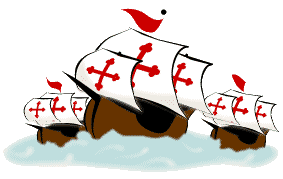
London's
Hyphenated Italians and Martinelli Barometers
![]()
Italian
Immigrants in London
1700s to 1911

London Martinellis

Barometers, Thermometers, Frames, Mirrors and
Wood-Working
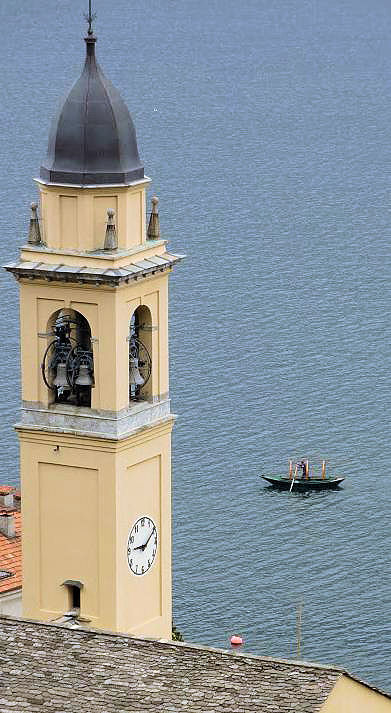
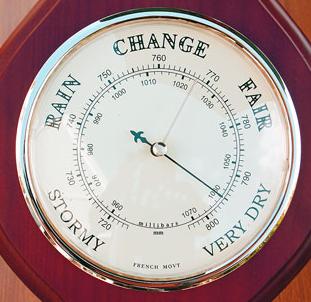

Martinelli Barometers on Leather Lane

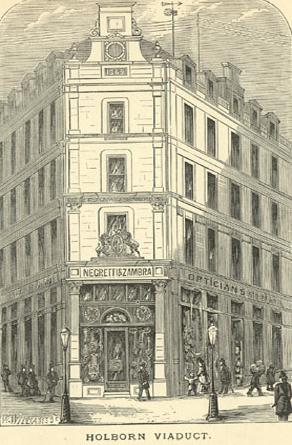
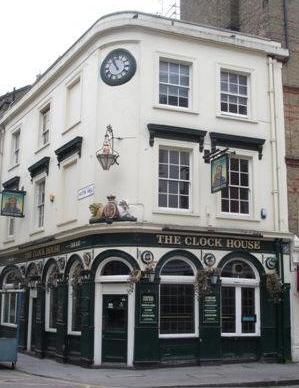

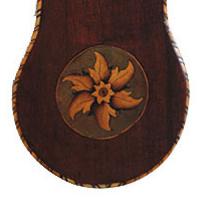
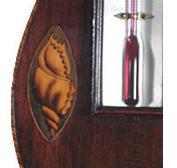

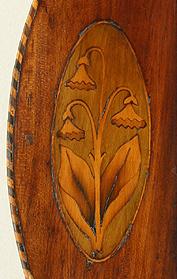

Leaving London Behind
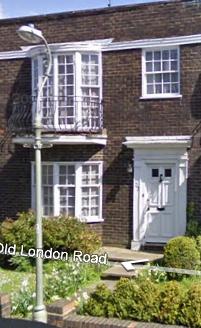
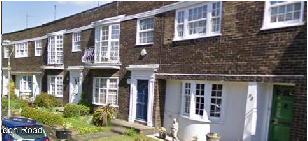
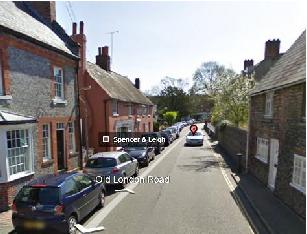
Back to London, New Location

Alfred and Elizabeth
Martinelli


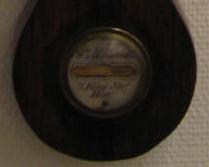
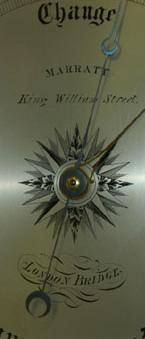




Anglo-Italian Barometer Makers
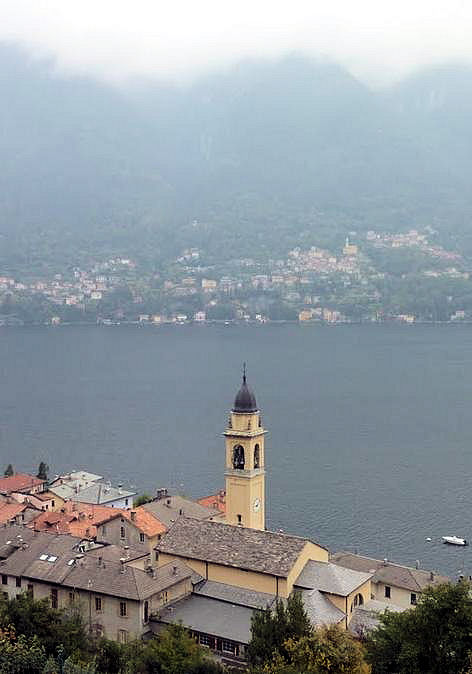

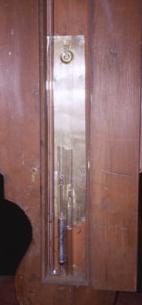
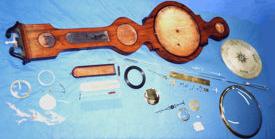
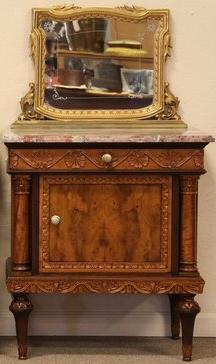
AGNEW, Thomas & Sons
AIANO, Charles
ALBERTI, Angelo
AMADIO, Francis
AMADIO, J
ANONE, Francis
BELERNO, D.
BARNASCHINA, A.
BARNASCONI, M.
BELLATTI, Charles
BELLATTI, Louis
BETTALLY, C.
BIANCHI, George
BOLONGARO, Dominic
BRAGONZI, P.
BREGAZZI, C.
BREGAZZI, Innocent & Peter
BREGAZZI, Samuel
BROGGI, Gillando
CALDERARA, A.E.
CALDERARA, S & A
CANTI, C.A.
CASARTELLI, A & J.
CASARTELLI, Joseph
CASARTELLI, Lewis
CASELLA, C.F. Ltd.
CASELLA, L.
CATTELY & CO.
CETTA, John
CETTI, Edward
CETTI, Joseph
COMITTI, Geronimo
COMITTI, Joseph
COMITTI, Onorato
CORTI, Jno
CORTIES & SON
CROSTA
DANGELO & CADENAZZI
FAGIOLI, Dominic
FAGIOLI, J.
GALLETTI, Antoni
GALLETTI, John
GALLY, Charles
GALLY, Peter & Paul
GATTY, Andrew
GATTY, Charles
GATTY, Domco
GATTY, James
GATTY, Joseph
GERLETTI, Charles
GERLETTI, Dominick
GIANNA, Lewis
GIOBBIO, J.B.
GIUSANI, P.
INTROSSI, P.
KALABERGO, John
LAFFRANCHO, J.
LIONE, Dominick
LIONE, James
LIONE & SOMALVICO
LOVI, Angelo
LOVI, Isabel
MAFFIA, Dominic
MAFFIA, Peter
MALACRIDA, Charles
MANGIACAVALLI, J.
MANTICHA, Dominick
MANTICHA, Peter
MANTOVA, P.
MARIOT, James
MARTINELLI, Alfred
MARTINELLI, D.
MARTINELLI, Lewis
MARTINELLI, P.L.D.& CO.
MARTINELLI, William
MAZZUCHI & Co.
MOLINARI, Charles
MOLTON, Francis
NEGRETTI & ZAMBRA
NOSEDA, John
PASTORELLI, Alfred
PASTORELLI, Anthony
PASTORELLI, Fortunato
PASTORELLI, Francis
PASTORELLI, John
PASTORELLI, Joseph
PASTORELLI & RAPKIN
PEDRONE, L.
PEDUZZI, Anthony
PEDUZZI, Joseph & Co.
PELLEGRINO, Francis
PEOTE, James
PEOVERY
PEURELLY, C.B.
PINI, Joseph
PITSALLA, Charles
PIZZALA, F.A.
POLTI, T.L.
POZZI, Peter
PRIMAVESI BROS.
RABALIO
RISSO, John
RIVOLTA, Alexander
RIVOLTA, Anthony
RIZZA, A.
RONCHETI & GATTY
RONCHETTI, C.J.
RONCHETTI, J.B. & J.
RONKETTI, J.M.
ROSSI, George
SALA, Dominico
SALLA, J. Bapt.
SCHALFINO, John
SILBERRAD, Charles
SILVANI & CO.
SOMALVICO, Charles
SOMALVICO, James
SOMALVICO, Joseph
SORDELLI, J.
SPELZINI
TAGLIABUE, Angelo
TAGLIABUE, Anthony
TAGLIABUE & CASELLA
TAGLIABUE, Cesare
TABLIABUE, Charles
TABLIABUE, John
TABLIABUE & TORRE
TARONE, Anthony
TARONE, Peter A.
TARRA, N.
TESTI, G & CO.
TESTI, J.
TORRE, Anthony
TORRE, G.B.
VARGO, F.
VECHIO, James
ZAMBRA, J.C.
ZAMBRA, J.W.
ZAMBRA, Mark W.
ZANETTI & AGNEW
ZANETTI, Vincent
ZANETTI, Vittore
Negretti & Zambra

Barometer World - Italians and the
Barometer Makers
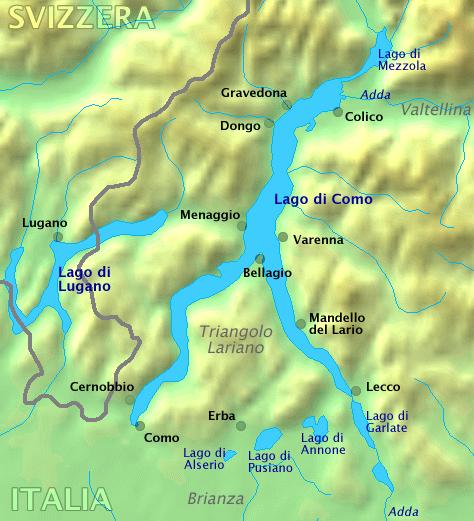 "It
was at this stage that the Italians appeared on the scene in England.
It had been soon after 1670 that Italian hawkers (travelling sellers),
began to sell barometers all over the European mainland. Most of
them came from northern Italy, from the district around Lake Como, and
they were following in the footsteps of many past generations of their
countrymen.
"It
was at this stage that the Italians appeared on the scene in England.
It had been soon after 1670 that Italian hawkers (travelling sellers),
began to sell barometers all over the European mainland. Most of
them came from northern Italy, from the district around Lake Como, and
they were following in the footsteps of many past generations of their
countrymen.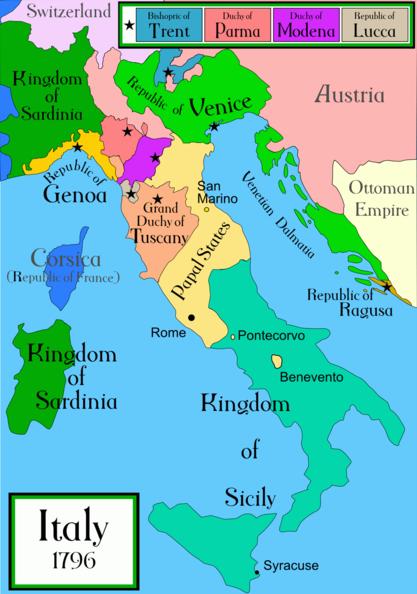 'Prior
to the French revolution, the markets they could reach over land, or
down the great rivers, would give them plenty of trade. After the
revolution, and the subsequent ravaging of the Continent by Napoleon,
things were very different. They would naturally look towards the
one major country that had not been over-run by the French:
England.
'Prior
to the French revolution, the markets they could reach over land, or
down the great rivers, would give them plenty of trade. After the
revolution, and the subsequent ravaging of the Continent by Napoleon,
things were very different. They would naturally look towards the
one major country that had not been over-run by the French:
England.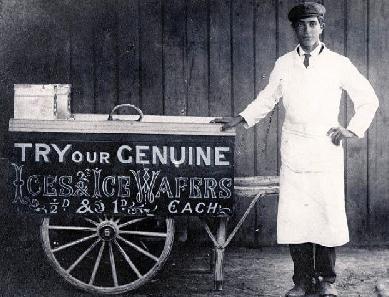 'Although
"Little Italy" became the centre for Italians in England, there were not
by any means confined to the capital. By the middle of the 1800s
there was hardly a town in England or Scotland of any size that
did not have at least one Italian barometer maker, plus of course others
in different trades.
'Although
"Little Italy" became the centre for Italians in England, there were not
by any means confined to the capital. By the middle of the 1800s
there was hardly a town in England or Scotland of any size that
did not have at least one Italian barometer maker, plus of course others
in different trades.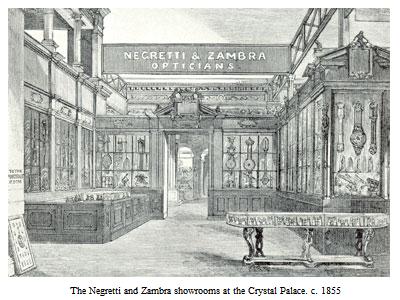 'The
barometer makers formed a close community and kept in touch with their
less fortunate countrymen. The smaller firms would buy tubes and
other parts from those with more extensive workshops, and assemble them
into cases marked with their own names. The cases were often made
at home by Italian wood-carvers, or in the case of English makers, by
local cabinet makers. They would be paid a few shillings each for
the cases, which would be finished off in the workshops of the bigger
firms.
'The
barometer makers formed a close community and kept in touch with their
less fortunate countrymen. The smaller firms would buy tubes and
other parts from those with more extensive workshops, and assemble them
into cases marked with their own names. The cases were often made
at home by Italian wood-carvers, or in the case of English makers, by
local cabinet makers. They would be paid a few shillings each for
the cases, which would be finished off in the workshops of the bigger
firms. "A
nickname applied to the western side of Clerkenwell because of its
strong Italian connections, which go back at least two centuries.
Also once known as Italian Hill, its boundaries are recognised as
Clerkenwell Road, Farringdon Road and Rosebery Avenue.
"A
nickname applied to the western side of Clerkenwell because of its
strong Italian connections, which go back at least two centuries.
Also once known as Italian Hill, its boundaries are recognised as
Clerkenwell Road, Farringdon Road and Rosebery Avenue.
Giuseppe Mazzini, the writer, patriot and revolutionary, lived in
Laystall Street and founded an Italian language school in nearby
Hatton Garden in 1841."Holborn
